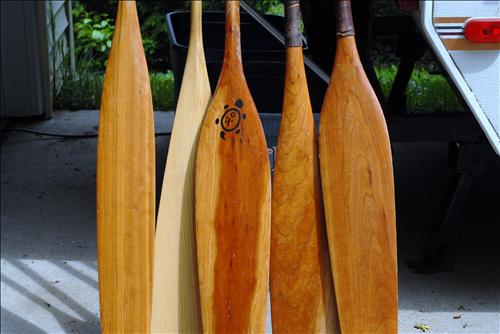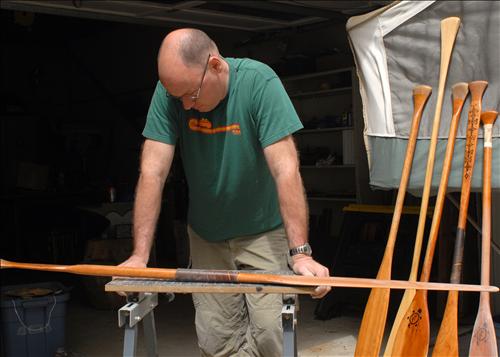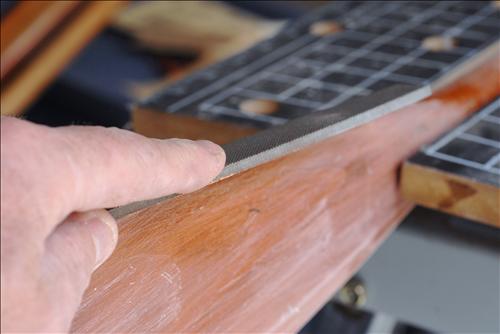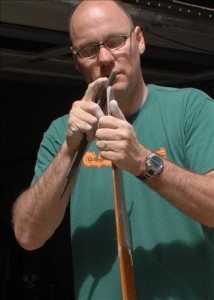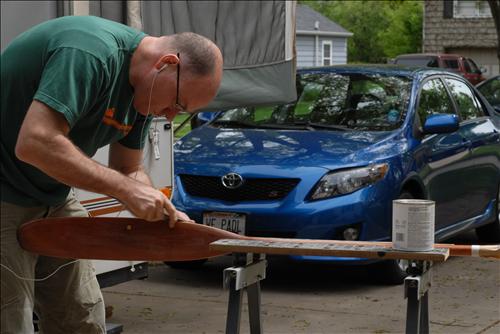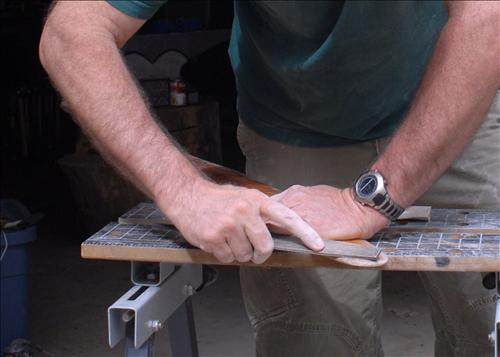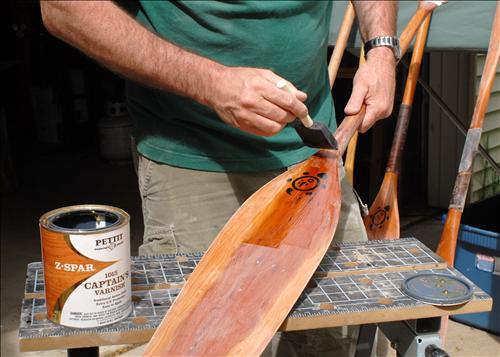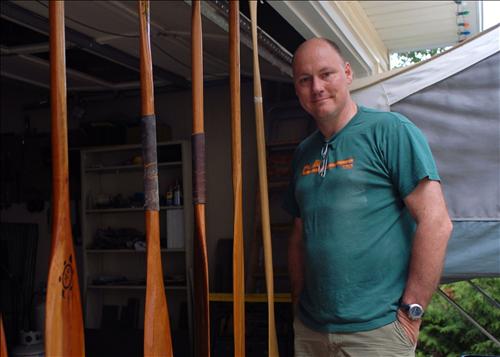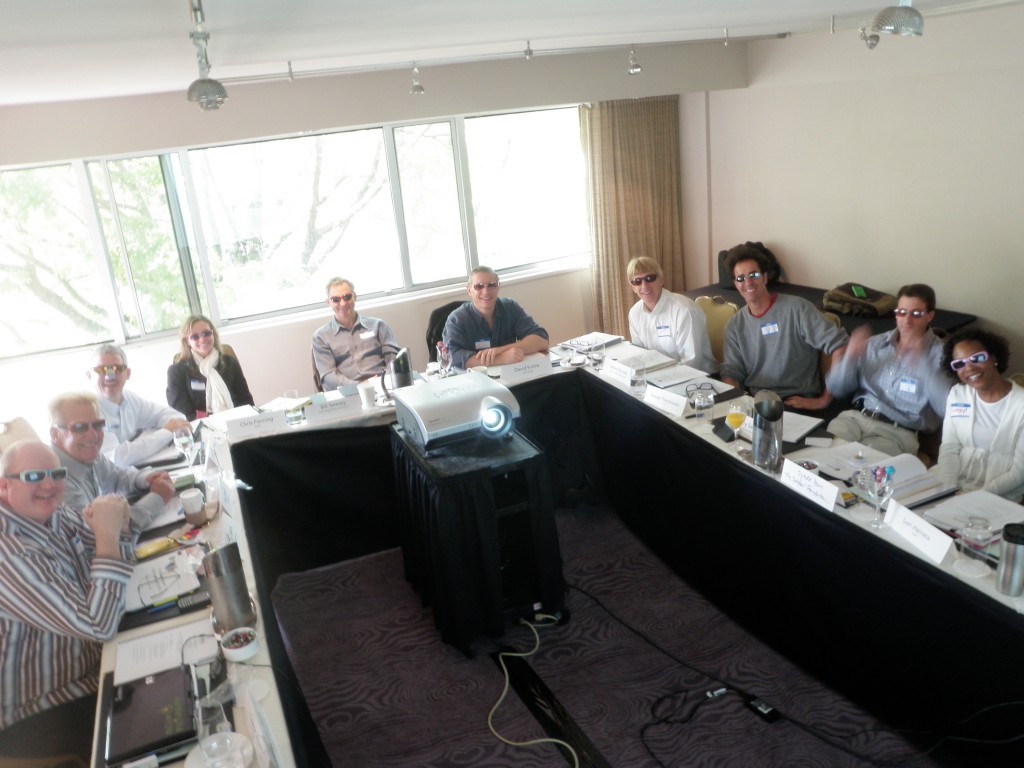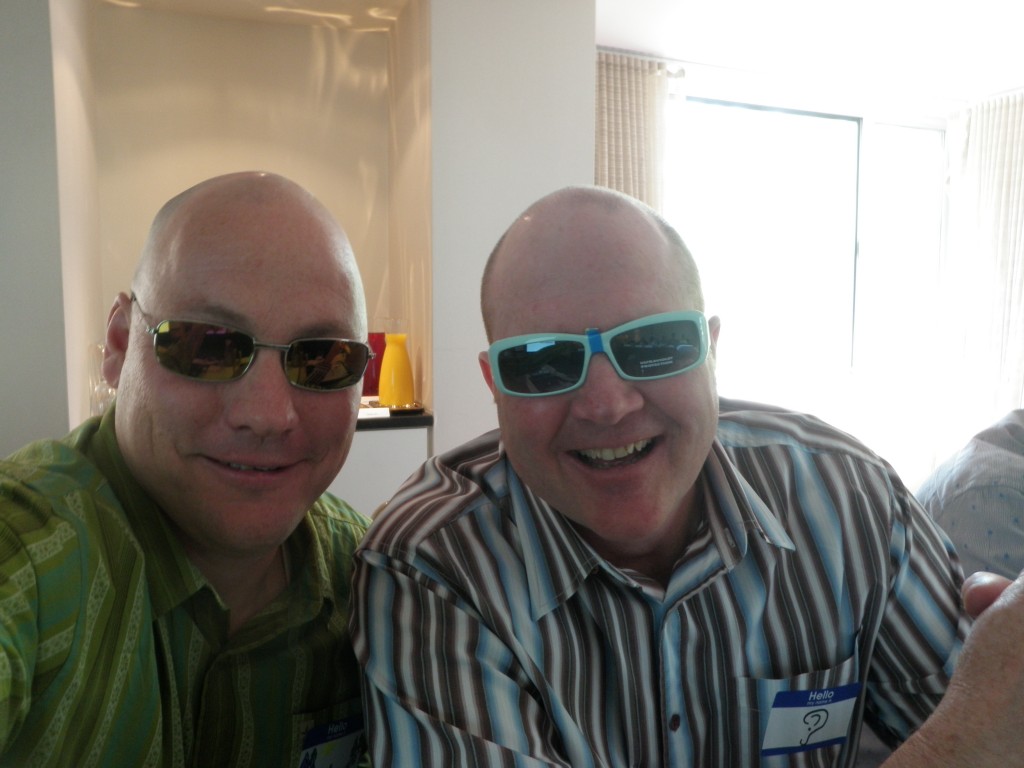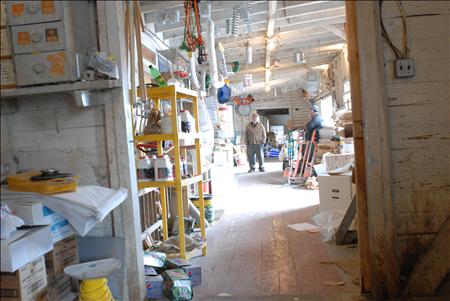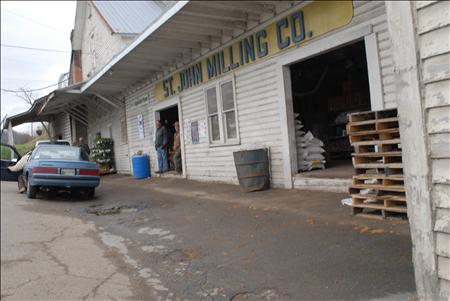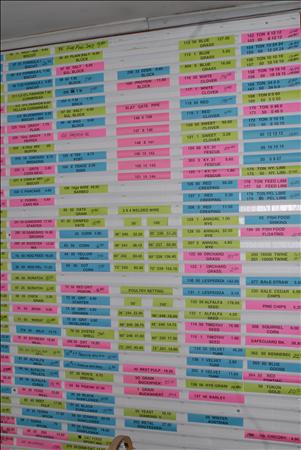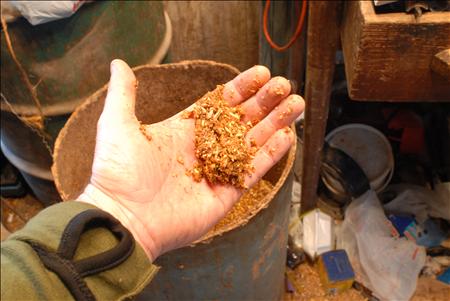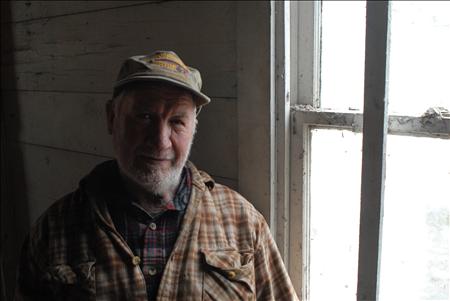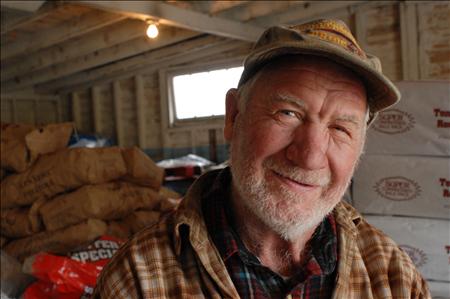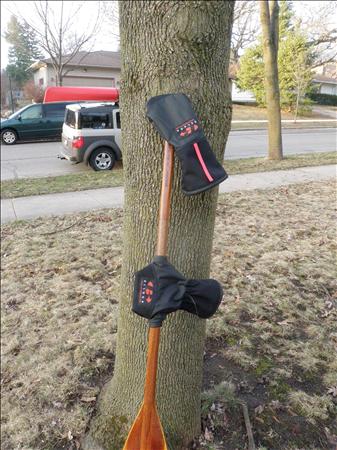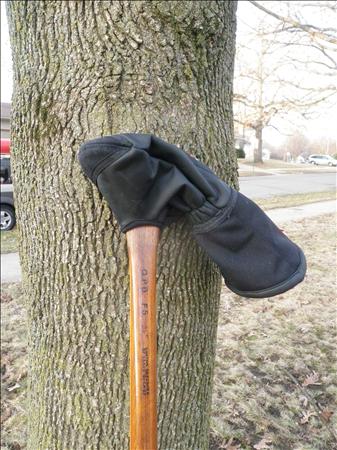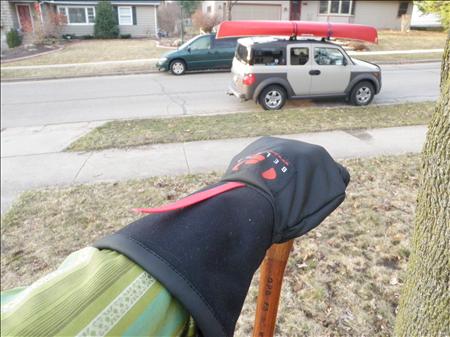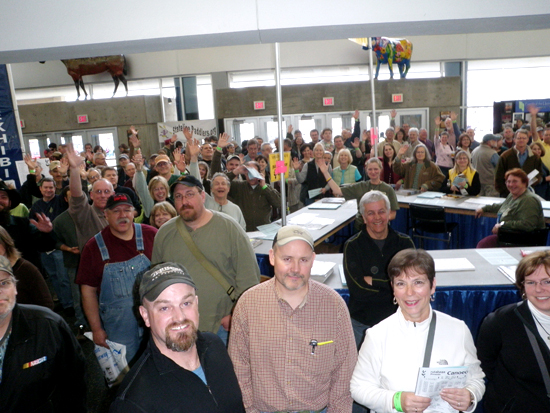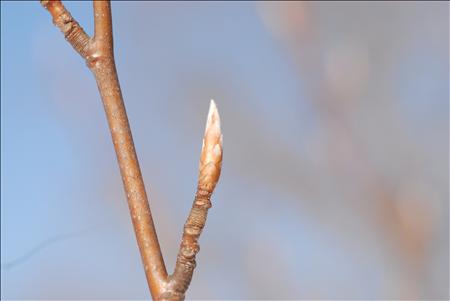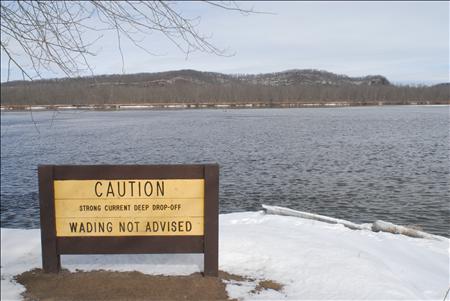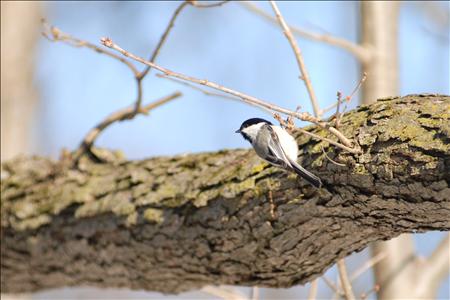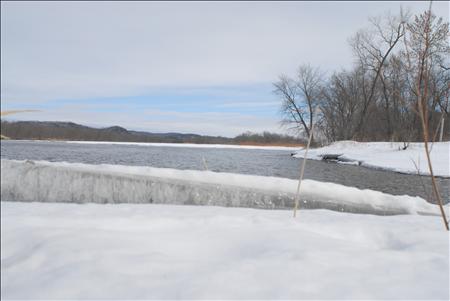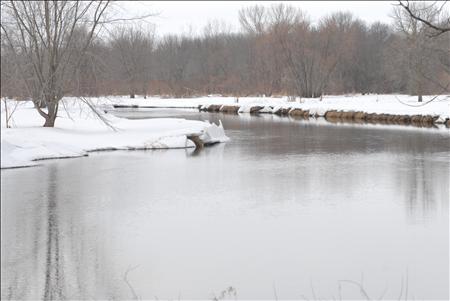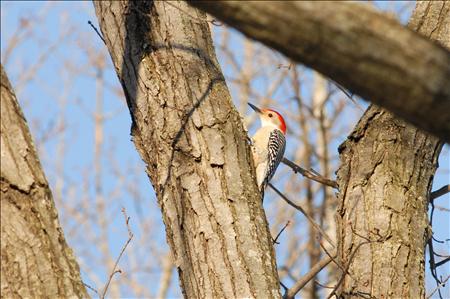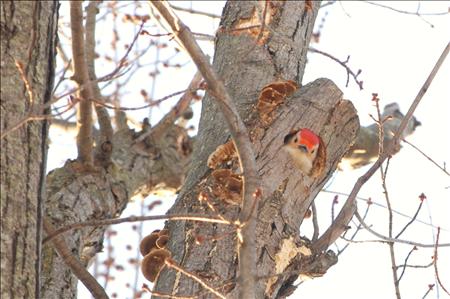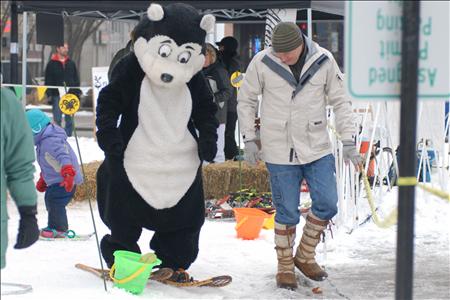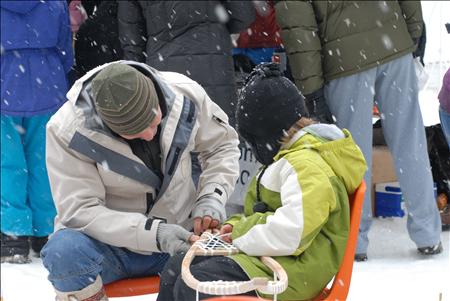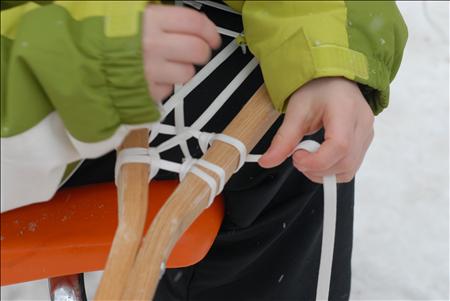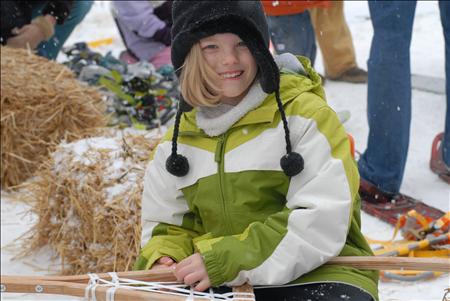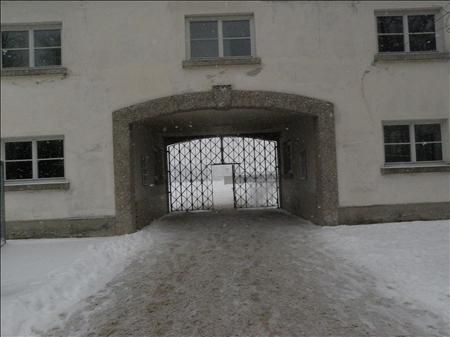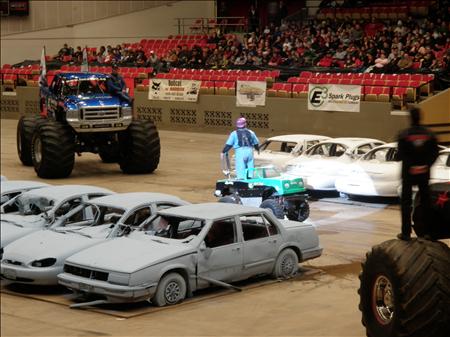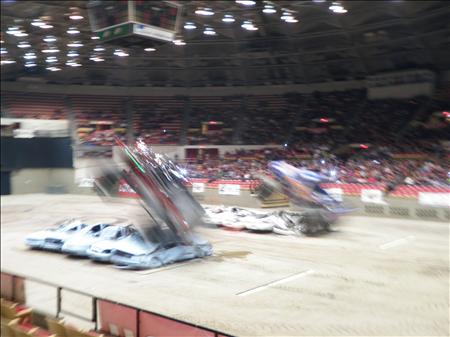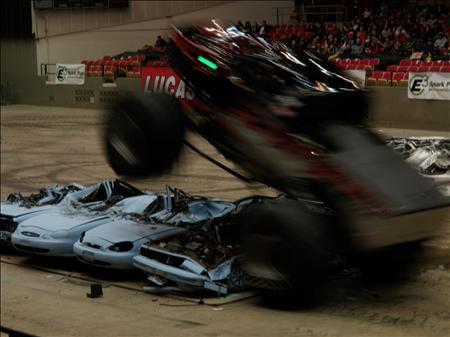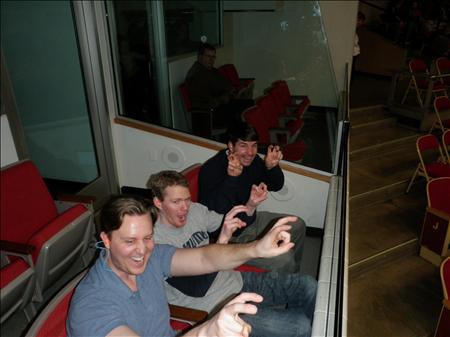I’m never quite sure why or when or how, but at some point a ganglion is activated in my limbic system*, the reptilian part of my brain over which I have no control. Once that little cluster of nerves goes ping, I get the itch to sand and varnish paddles.
I have a fair number of canoe paddles, and all but a few carbon fiber racing paddles are wood. Most of those are cherry with a few exotics thrown in for good measure. But they’re all wood, and they all need maintenance. Some people look at this as a bad thing, which is why they make cheap, plastic paddles, so lazy people can throw the paddles in the corner of the garage until next year’s annual Beerfest and Sunscreenathon. Not that I’m judging them. Okay, I’m judging them, the hirsute troglodytes.
Always stare at a paddle before you dig in. Otherwise it’s
not a mindful exercise and you will make mistakes.
True in many aspects of Person/Thing interactions, I believe that the maintenance process gives a person a connection to the thing. I loved changing the oil in my 1957 VW. It was fun, and I felt a certain kinship with that car. I don’t look at my paddle maintenance as a chore, I look at it as a pleasure.
One of my favorite authors, Thich Nhat Hahn, writes about the activity being a fairly neutral thing; it is our intention and approach that make something pleasant or unpleasant. For example, when washing the dishes, Nhat Hahn imagines each dish or cup to be a baby, and he washes the dish with the same care. It transforms the mundane activity to a meditation, except my meditation ends with a rack of varnished paddles.
I started prepping paddles a few days ago, and I thought I’d get a jump-start on them by using a palm sander. Through my clumsy and inattentive sanding, I almost ruined a perfectly good paddle because of my haste to “get them done.” After a brief self-chastisement, I put away the palm sander. It’s a good tool for picnic tables, but for paddles, I’ll never use it again.
So now it’s back to hand sanding, and a little rasp work with a file. A pattern maker’s rasp is great for shaping new paddles, but for this sort of work I’d rather use a nice flat file with some beefy teeth. That’s especially true after almost butchering a paddle with the palm sander. Not taking too much off, just trying to get to some clean wood so the varnish will take and the old varnish won’t flake off taking the new varnish with it.
This part is fairly tedious, but for me it’s the best part. This is where you can improve a paddle or ruin it for anything but decorating the walls of your cabin (or in our case, our home). A finer blade slices in and out of the water with a silence that preserves the feeling of solitude. A heavier tip is nice sometimes, just to give the paddle a little more durability, but too much and you get a chunky, inelegant tip that turns a sweet paddle into a war club.
Once the paddle is shaped and cleaned up, it’s sanding time. I like this less than the shaping, but it’s still satisfying, especially if the last person who varnished did a poor job and there are sags in the varnish that need cleaning up. Usually, the last person who varnished the paddle and did a poor job is me. That’s fine, I can deal with a critic.
Most people these days do not work with their hands, they work with their brains (at least in theory). To work with your hands is so rare that many are unaware of just how satisfying it is to create, repair or restore something. It is especially satisfying if what you are repairing or restoring is destined for a landfill.
In the case of one particular paddle, it was given up for dead. It was a Turtle Paddle Ottertail, and since the handmade Turtle Paddle is history, I couldn’t let one die in the back of the test paddle shed, where it was languishing in disrepair. A large gouge out of once of the edges of the paddle would not bear fixing, so I decided to reshape the paddle, filing away the section with the gouge in it and then doing so on the other side of the paddle blade so it wouldn’t twist in the water and drive me nuts.
I managed to get it mostly correct and now, where bad paddle existed, now there’s a fine one ready for action, as soon as I stitch up a nice leather grip for it. I will give it away, since it cost me nothing and I already have a nice quiver of paddles, so I need another one like I need another…well…canoe paddle.
Now it’s time for the varnishing. Cheap varnish is like cheap perfume. If you’re not going to use the good stuff, better off to do nothing. I spent two hours plus doing all work, and if I billed $180 an hour (the last legal bill I paid was just that), that means I’m spending $360 worth of time. A $10 can of varnish is incrementally the smallest expenditure, and a $40 can of varnish is worth every penny. Actually, a $40 can on sale (2 for $50) is a great deal.
The varnishing takes very little time compared to the rest of the work. Even moving slowly and methodically, there’s just not much surface area so the work goes quickly. Just long, even strokes, keeping a wet edge and trying to keep the brush load to a minimum. I use foam bushes, not because their cheap and disposable, it’s because I like the control I have over how much varnish goes down. Sure, long bristle brushes are great, but for my uses, foam works better.
There’s one paddle for which I was taking special care. My Shaw and Tenney Grand Lake Stream paddle. Designed by a Maine guide, it’s a great paddle for deeper waters, but if you need to stand to scout a rapid (as many Maine guides did), you can keep the paddle in the water. Its pizza paddle blade gives incredible control.
It had an oil finish before, but I found that the blade cupped after being exposed to water for a period of time. Paddles are made to get wet, ergo, I needed to seal up the grain and stabilize things a bit.
I gave her a nice coat of varnish a couple of days ago, and it was dry but not completely cured, which is a perfect time for a second coat. Again, the wonders of a high-quality varnish showed through and the ash grain is intense and beautified.
After all this varnishing, the only way to dry them is to hang them. Little permanent hooks are fastened into the lintel of the garage door, so with a little string we’re hanging in a nice, sunny, breezy area. Unfortunately, yesterday was a little too breezy, and the paddlers started banging into each other. That part sucks. So I had to rig up a few more little guy wires to keep the paddles from twisting in the wind. In the end and that was needed was a little cleanup.
So that was my Saturday afternoon.
Respectfully submitted,
Canoelover
*The limbic system is the part of the brain that makes guys like the Porsche 911, deep-fried cheese curds and Scarlett Johannson without knowing exactly why. It’s the lizard brain, the one that doesn’t think, it just does stuff.

